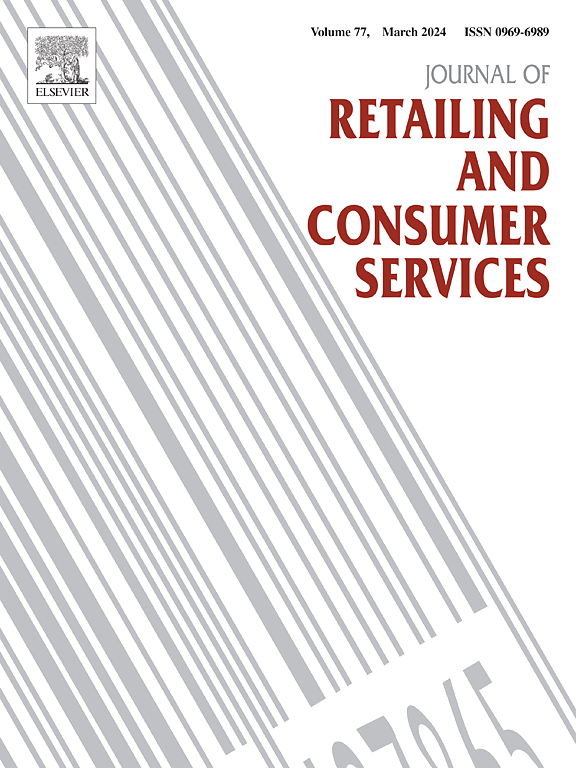The effect of NFT visual quality on consumer evaluations of luxury goods in the metaverse
IF 11
1区 管理学
Q1 BUSINESS
Journal of Retailing and Consumer Services
Pub Date : 2025-06-04
DOI:10.1016/j.jretconser.2025.104346
引用次数: 0
Abstract
Luxury brands creating non-fungible tokens (NFTs) often face technical constraints that compromise visual aesthetics, potentially conflicting with their high-end image. This study investigates how the visual quality of NFTs and the presence of price information influence consumer perceptions of luxury goods in the metaverse across three experimental studies. Study 1 compared consumer evaluations across three conditions: good-quality NFT, poor-quality NFT, and no NFT. The findings revealed that poor NFT visual quality negatively influenced evaluations of the original product, with perceived authenticity identified as the key underlying mechanism. Study 2 examined whether this negative effect could be mitigated by the presence of price information. The results showed that a poor-quality NFT accompanied by price information resulted in more favorable evaluations of the original bag, regardless of style similarity. Study 3 replicated these findings using a three-condition design (low-price NFT, high-price NFT, and no NFT), demonstrating that the mitigating role of price information. Together, these findings contribute to the emerging digital fashion literature by highlighting the importance of visual quality and price transparency in NFT-based luxury marketing strategies within the metaverse.
NFT视觉质量对奢侈品消费者评价的影响
创建不可替代代币(nft)的奢侈品牌经常面临损害视觉美学的技术限制,可能与他们的高端形象相冲突。本研究通过三个实验研究探讨了nft的视觉质量和价格信息的存在如何影响消费者对虚拟世界中奢侈品的感知。研究1比较了三种情况下的消费者评价:优质NFT,劣质NFT和无NFT。研究结果表明,较差的NFT视觉质量会对原始产品的评价产生负面影响,而感知真实性被认为是关键的潜在机制。研究2考察了价格信息的存在是否可以减轻这种负面影响。结果表明,质量差的NFT伴随着价格信息导致了对原始包的更有利的评价,而不管风格是否相似。研究3使用三条件设计(低价NFT、高价NFT和无NFT)复制了这些发现,证明了价格信息的缓解作用。总之,这些发现通过强调视觉质量和价格透明度在虚拟世界中基于nft的奢侈品营销策略中的重要性,为新兴的数字时尚文献做出了贡献。
本文章由计算机程序翻译,如有差异,请以英文原文为准。
求助全文
约1分钟内获得全文
求助全文
来源期刊
CiteScore
20.40
自引率
14.40%
发文量
340
审稿时长
20 days
期刊介绍:
The Journal of Retailing and Consumer Services is a prominent publication that serves as a platform for international and interdisciplinary research and discussions in the constantly evolving fields of retailing and services studies. With a specific emphasis on consumer behavior and policy and managerial decisions, the journal aims to foster contributions from academics encompassing diverse disciplines. The primary areas covered by the journal are:
Retailing and the sale of goods
The provision of consumer services, including transportation, tourism, and leisure.

 求助内容:
求助内容: 应助结果提醒方式:
应助结果提醒方式:


